8 Fantastic Container Vegetable Combinations For Better Produce In Small Spaces, According To Expert Gardener & Former Chef
These container veggie combinations will boost your produce. Each plant will help the others grow and help you save space. Try out these tasty combos.
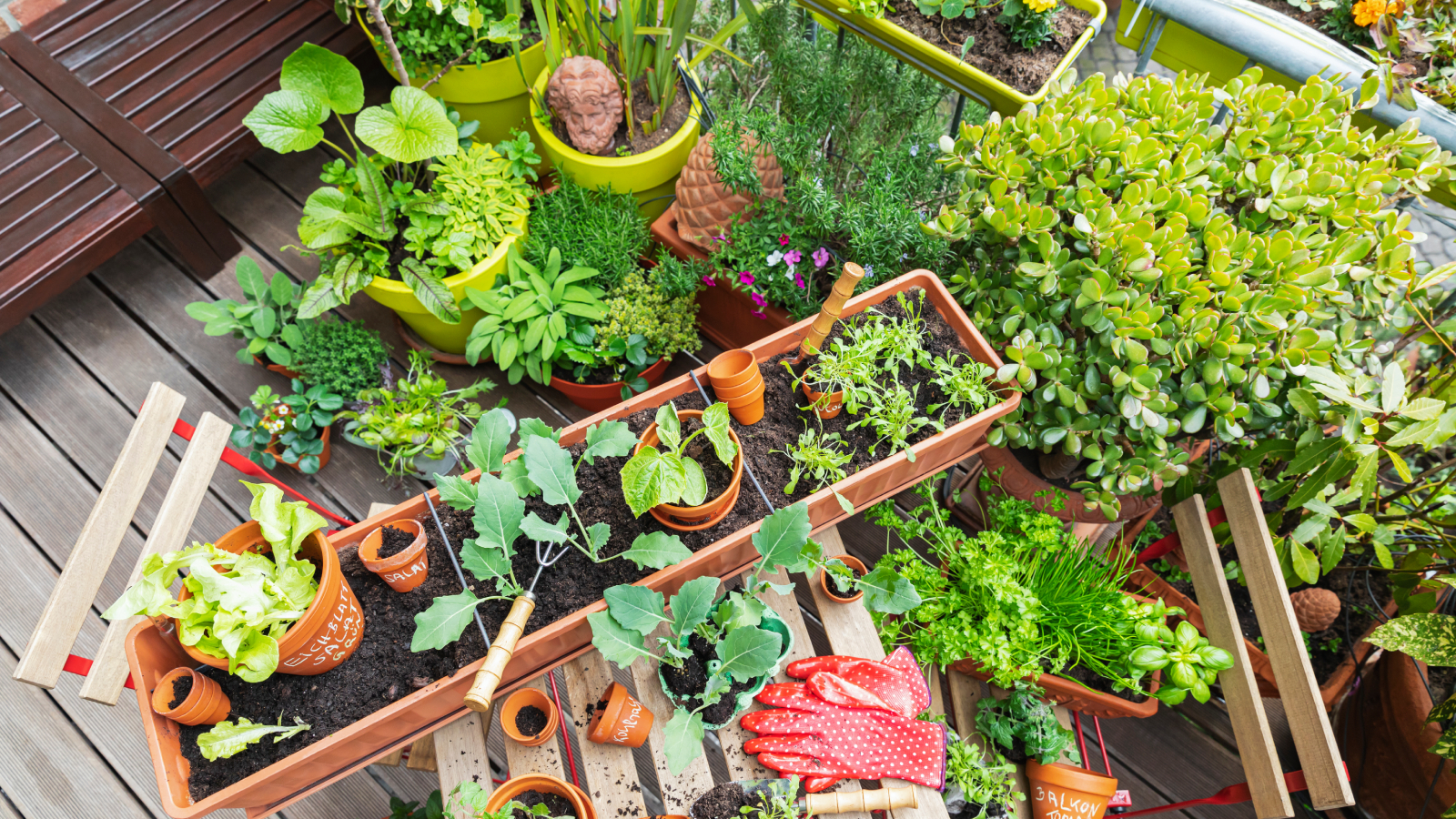

Amy Draiss
You don’t need a big veggie plot to grow your own produce. Many of our favorite food plants can also be grown in containers. The container should match the mature size of your plant and have drainage holes and good quality soil.
You can enhance your growing experience by utilizing companion planting. Companion planting is a practice of combining certain plants in the same container that will assist each other’s growth in some way. The plant may be a pest repellent, a decoy plant, a support for leggy plants, or attract pollinators to increase yield.
Such pairings also allow you to maximize the container with edible plants. Let's explore some good combinations for container vegetable gardening so you can get growing and have the freshest produce on the block.
How to Grow Vegetables Together in Pots
There are many suitable plants for designing your container vegetable garden. Tomatoes, especially the smaller varieties and determinate tomato plants, are perfect in containers. You can also grow smaller squash varieties such as zucchini. Cucumber, beans, peppers, lettuce and greens, herbs, onions and other Allium, potatoes, eggplant, peas, and many common root vegetables will all produce modest but satisfying crops in pots. The key is good soil, the right size container, and of course, plenty of sunlight.
Your selection of containers is one of the more important components of growing a container garden. Unglazed pots are fine, but they will dry out much more quickly than glazed containers. Those big construction buckets are an ideal size for bigger plants like squash or tomatoes. Just make sure the container has plenty of drainage holes. Home Depot has a great selection of planters like this extra large ceramic planter with a drainage hole. You can also try a cheap 5 gallon bucket vegetable garden with buckets from the Home Depot.
On average, a plant needs 12 inches ( 30.48 cm.) of soil in which to grow, but if you have deeper pots that would be even better as it will allow for a more robust root system. The diameter of the container will depend upon the mature size of the plant. Most seed packets can give you an idea of the spacing for the plant. This will indicate approximately how wide your pot should be for the mature vegetable. Once you have your containers and have planted them, it is time to incorporate some other plants that will enhance and assist the vegetable’s growth.
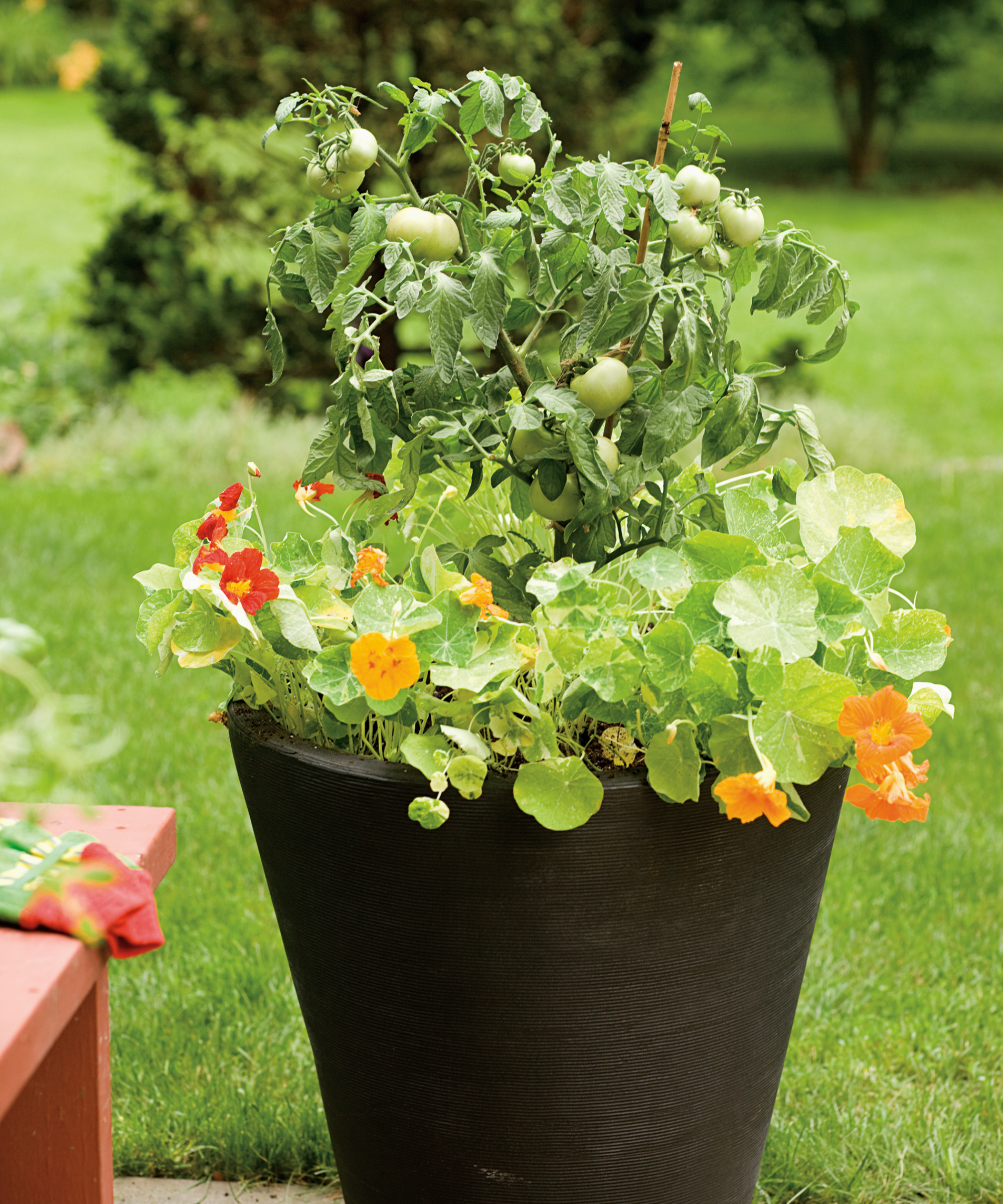
1. Potatoes
Potatoes work beautifully in containers. Some of the best companion partners for these spuds are cabbage, and other cruciferous veggies. Beans are also ideal and can be grown above the potato crown. Herbs like basil, cilantro, and chives can help prevent some of the common pests of potatoes.
Sign up for the Gardening Know How newsletter today and receive a free copy of our e-book "How to Grow Delicious Tomatoes".
Flowers, especially edible flora, are attractive and can also minimize pest issues. Nasturtiums have a scent that deters many flying insects. Marigolds have a similar effect and are also edible. Smaller plants like spinach or lettuces can also be tucked in around the potato leaves.
2. Tomatoes
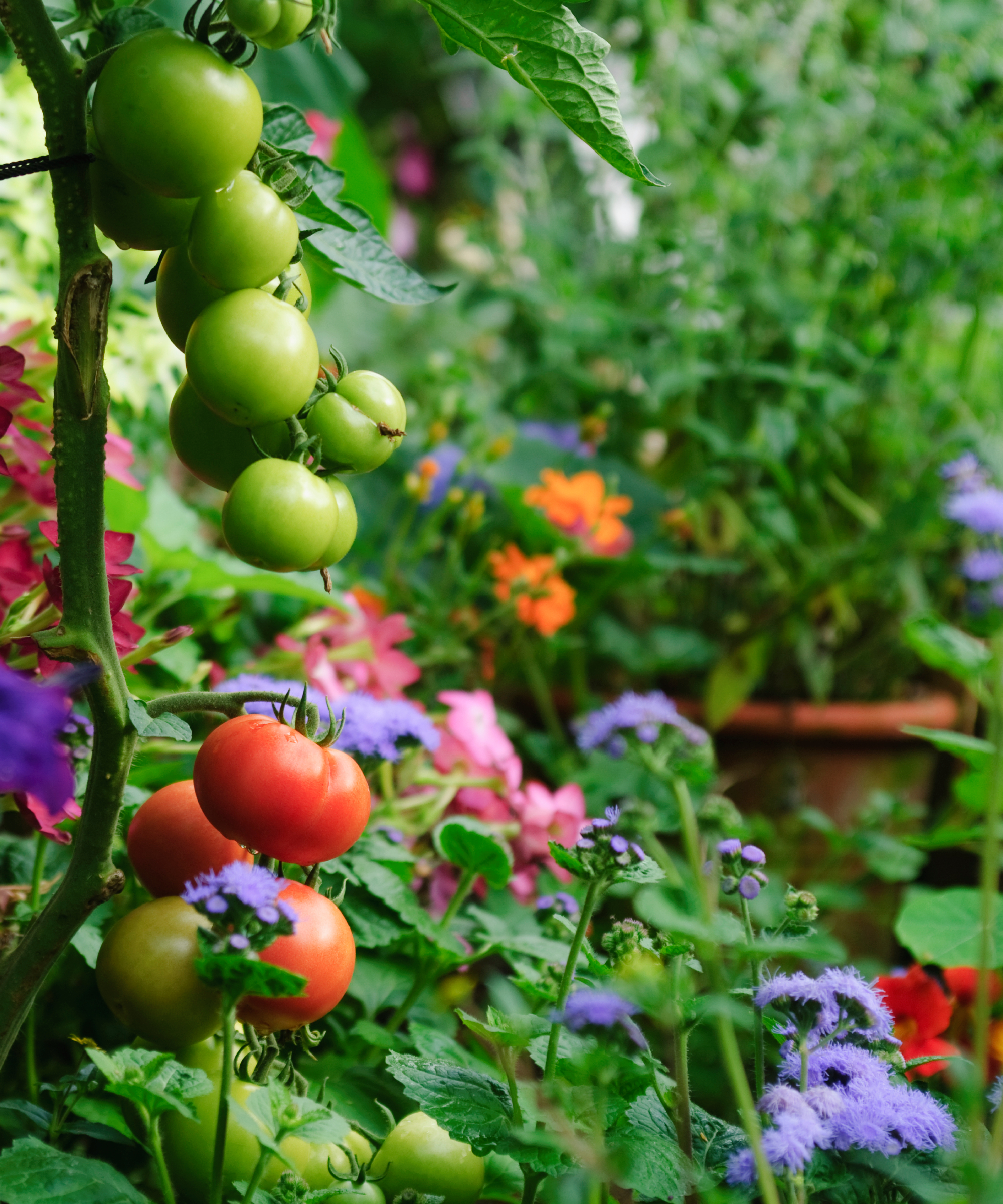
Whether you like the tiny, sweet cherry tomatoes, or robust plum or slicing tomatoes, these nightshade plants perform well in containers. A classic pairing is basil. Other herbs to plant with tomatoes include borage and parsley attract beneficial insects to pollinate the tomato flowers and increase yields. Oregano repels aphids and spider mites. Companion planting with onions also deters aphids and thrips. Garlic and chives, with their strong scent, repel whiteflies, aphids, spider mites, and many other pests. Carrots planted around the root zone will help keep the soil aerated for better root health.
3. Pole Beans
Pole beans are fun to grow in containers provided you have a trellis or even a tomato cage for them to climb. Plant pairings for beans might be rosemary and lovage. Cucumbers and peas have the same growth pattern and can rise up with the beans. The peas will also fix nitrogen in the soil. To protect the beans from aphids, plant marigolds. This tomato tower from Home Depot is a good, sturdy option for growing beans, tomatoes, or other vining veggies with ease.
4. Carrots
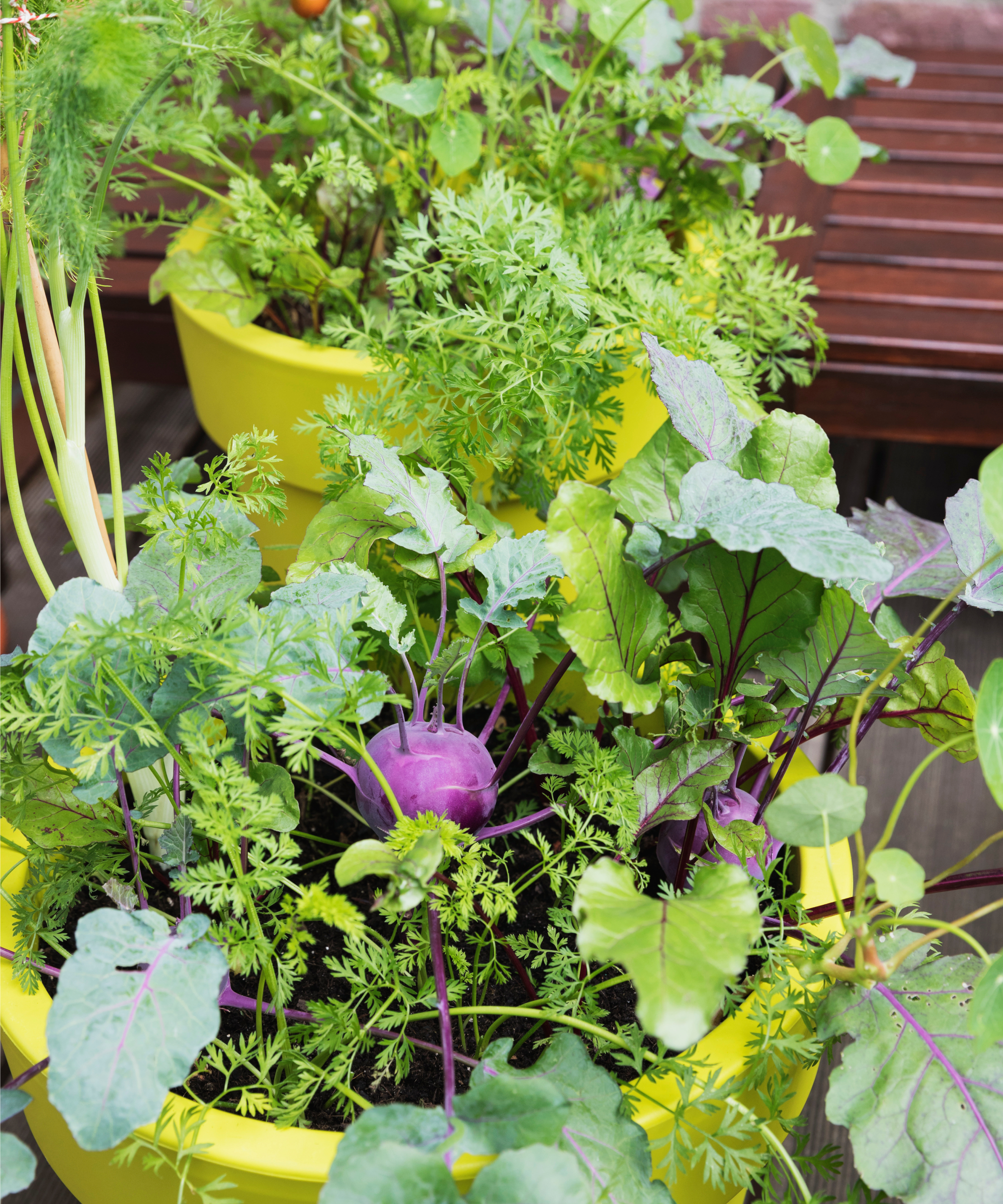
Container-grown carrots, when planted with onions, develop larger roots. Lettuce has a shallow root system and won’t interfere with the carrot roots. Chives and other Allium repel carrot flies with their strong scent. Rosemary also repels flies with its pungent aroma. Many other smaller plants are useful in a carrots container provided they don’t crowd the carrot roots. Radishes, kohlrabi, turnips, lettuces and greens, and cabbage will all interact well with carrots.
5. Lettuce
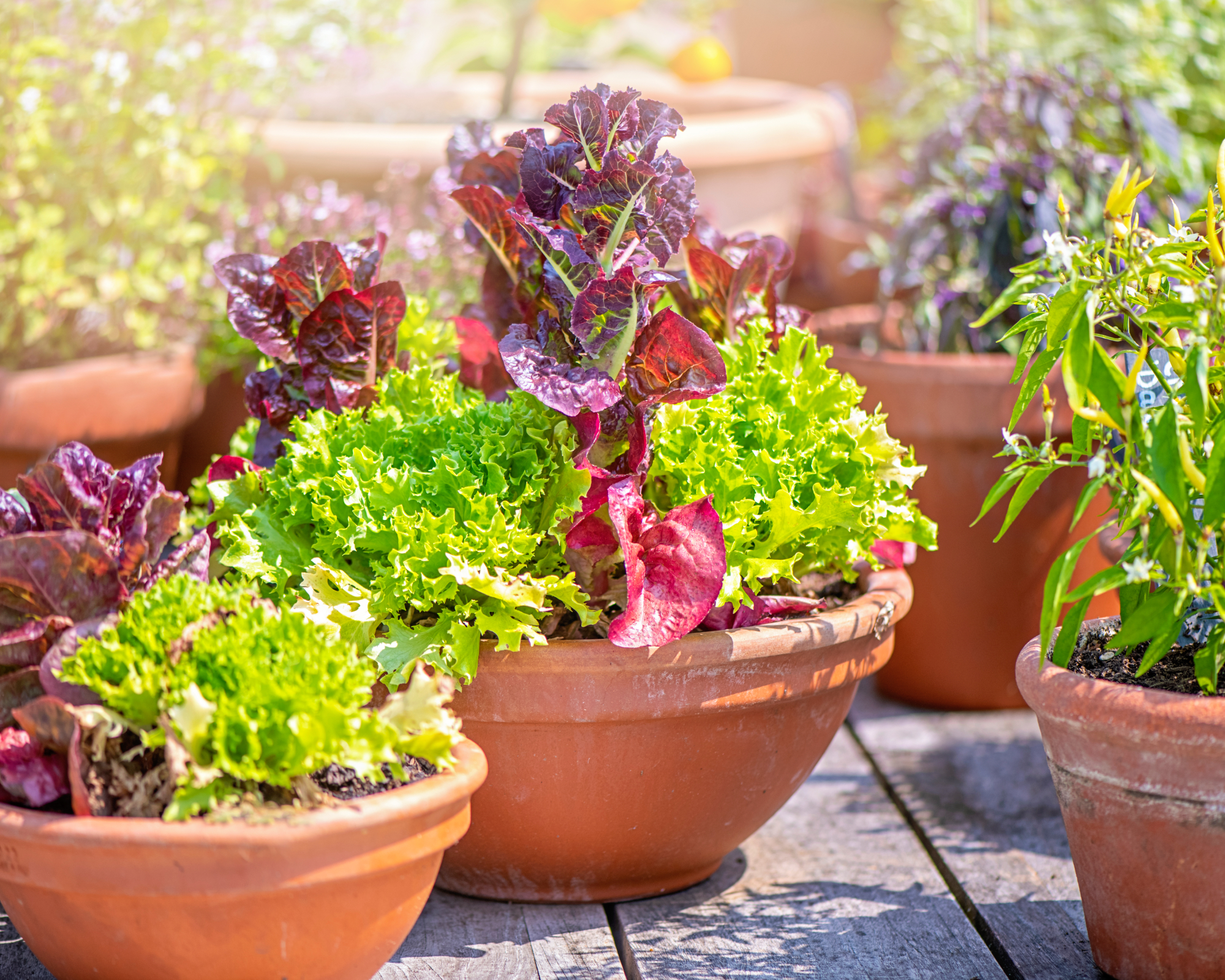
Container-grown lettuce can be interspersed with root crops like carrots, radish, or beets. To protect the leaves from pests, grow some herbs such as oregano and thyme. This is another plant that benefits from the presence of strong smelling Allium like onions or chives. Peas planted in containers with lettuce benefit from the cooler soils provided by the lettuce leaves.
6. Spinach
Spinach is part of a common small vegetable planting medley of spinach, beans, peas, celery, and radish. The beans and peas increase the nitrogen in the soil, while the spinach cools the soil for these plants. The radish emits a strong scent that repels certain pests. Celery is a vertical plant that doesn’t take up much room and can be interspersed among the spinach plants.
7. Peppers
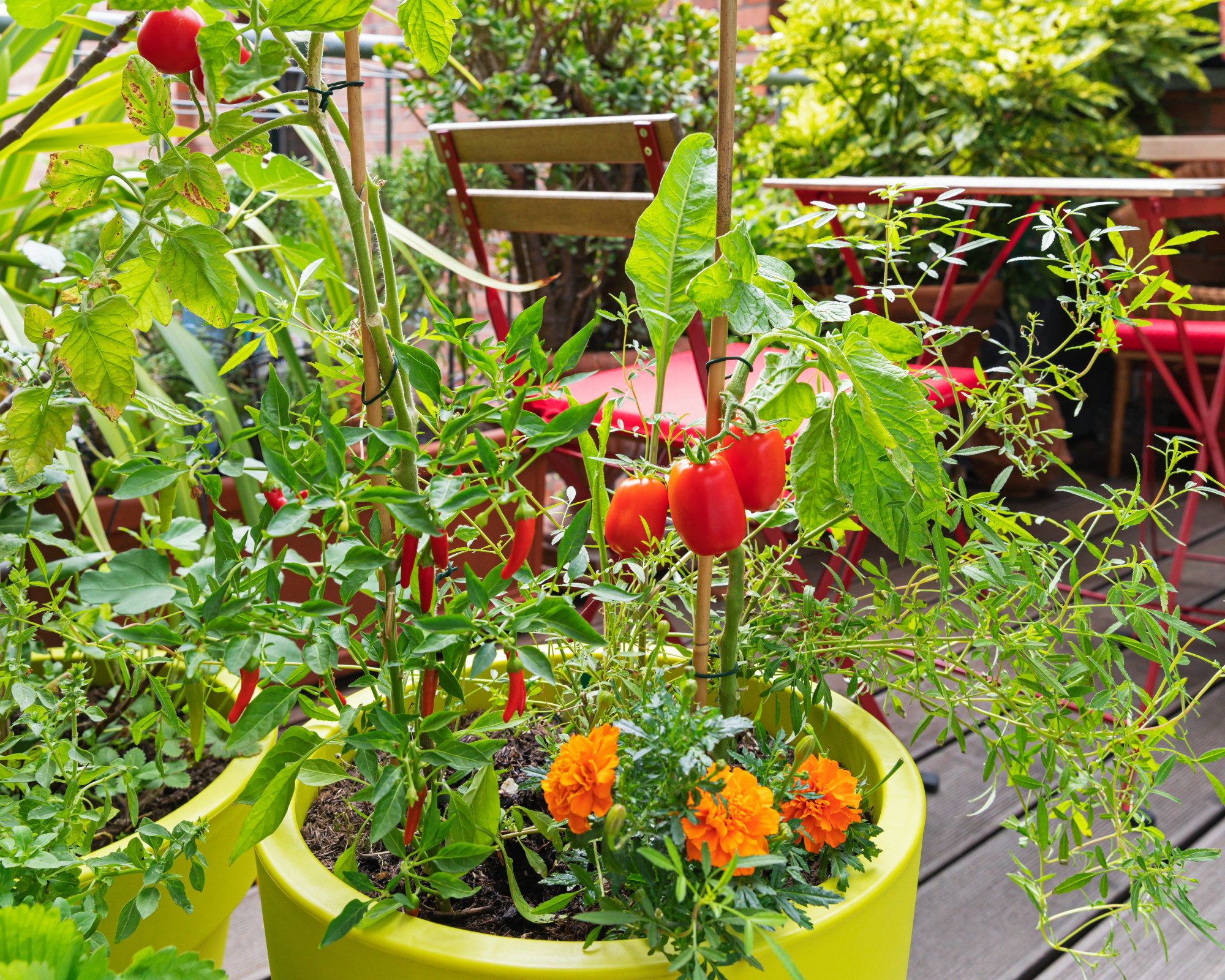
Both bell and chili peppers grown in containers benefit from herbs like basil which have an insecticidal quality from the essential oils in the leaves. Dill, cilantro, oregano, and rosemary will also keep insects at bay. Alliums like chives and onions will also deter many flying and crawling insects.
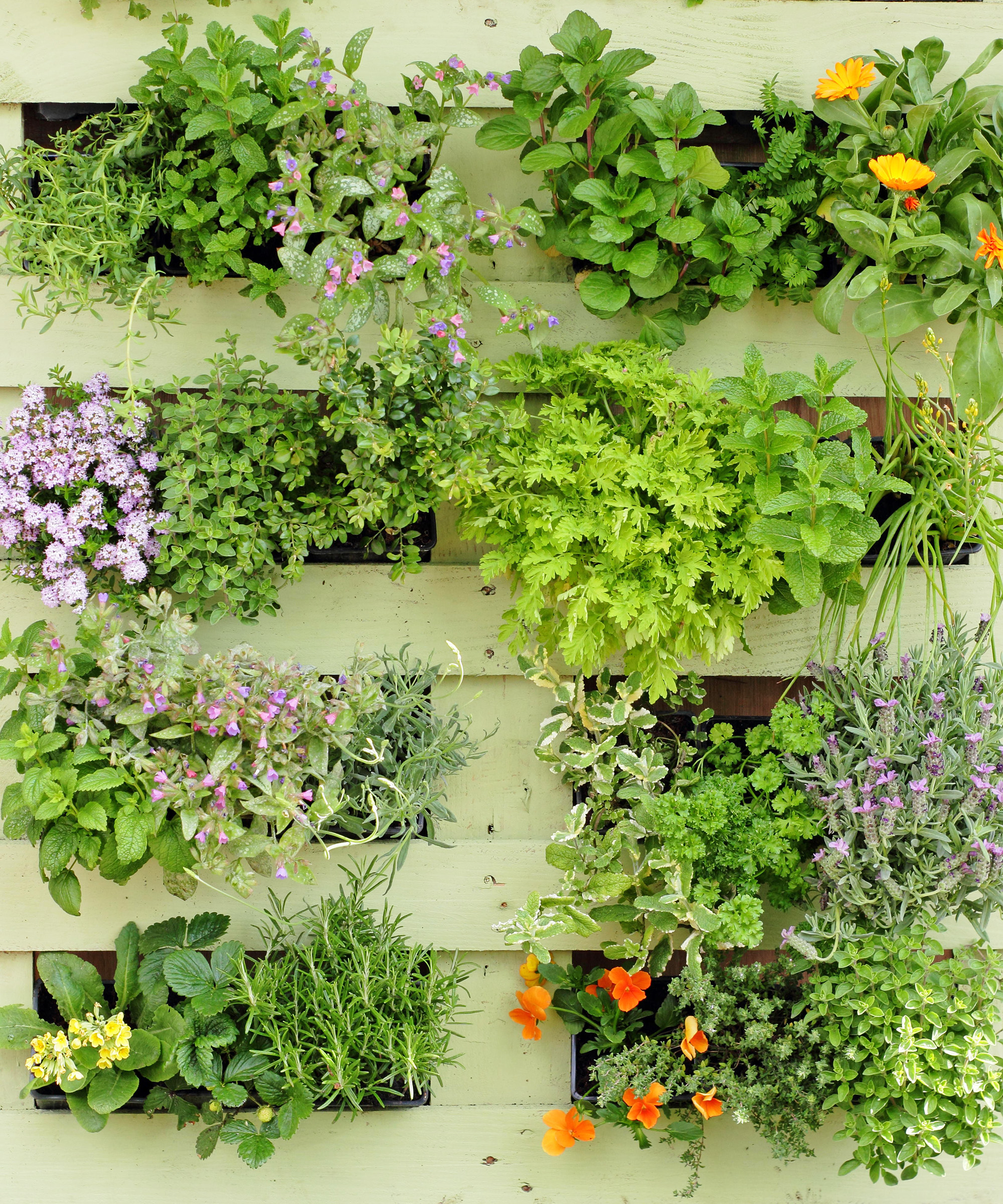
Our expert-curated selection of herb garden supplies includes everything you need to grow delicious herbs in your vegetable container garden or your kitchen windowsill. Find in the Gardening Know How Shop.
8. Cabbage and Kale
Cabbage and kale are part of the cruciferous family and have powerful repellent properties themselves. When you interplant with garlic, many insects like cabbage moths keep their distance. Thyme, rosemary, sage, and dill are also good at repelling insect pests. Nasturtium, tansy, and chamomile have insect warding properties and also produce lovely flowers to brighten up the container.
Container gardening is a great way to make the most of the space you have and can yield great results for vegetables, herbs, and flowers. Hopefully these container veggie combinations will get you thinking and help to make your garden productive and beautiful for years to come.

Amy Grant has been gardening for 30 years and writing for 15. A professional chef and caterer, Amy's area of expertise is culinary gardening.
- Amy DraissDigital Community Manager